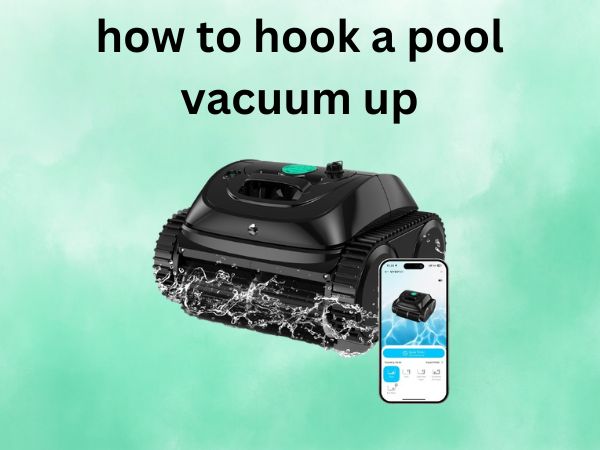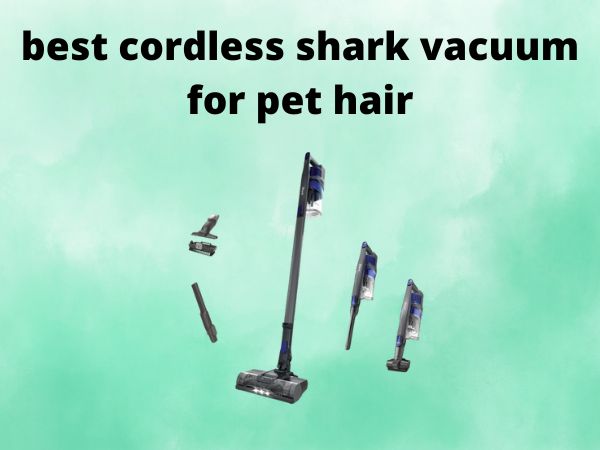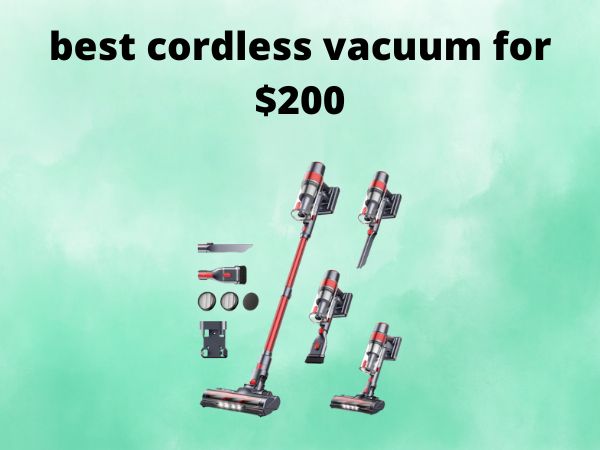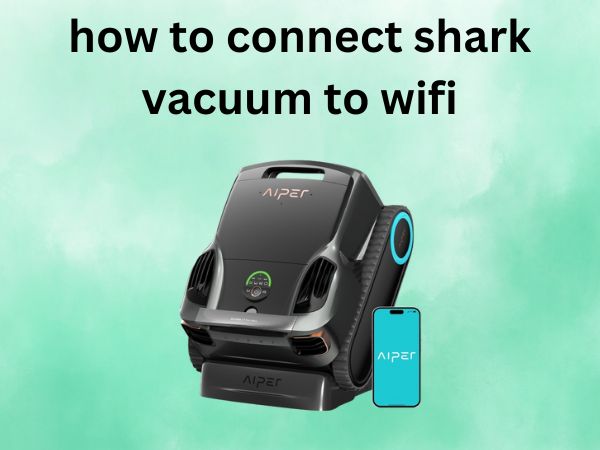How to Hook a Pool Vacuum Up [Your Complete Step-by-Step Guide]
Ever stared at your murky pool water and wondered how to get that crystal-clear sparkle back? You’re not alone! Connecting a pool vacuum might seem like rocket science at first, but it’s actually simpler than you think. Whether you’re a first-time pool owner or just need a refresher, this comprehensive guide will walk you through everything you need to know about hooking up your pool vacuum like a pro.
Table of Contents
Why Pool Vacuuming Matters More Than You Think
Think of your pool vacuum as your pool’s personal housekeeping service. Just like you wouldn’t let dust bunnies take over your living room, you shouldn’t let debris accumulate in your pool. Regular vacuuming doesn’t just keep your pool looking Instagram-worthy – it’s crucial for maintaining proper water chemistry and preventing costly repairs down the road.
When debris sits on your pool floor, it becomes a breeding ground for algae and bacteria. These unwanted guests can quickly turn your backyard oasis into a green swamp that nobody wants to dive into. Plus, neglected debris can stain your pool’s surface and clog your filtration system, leading to expensive repairs that could easily be avoided.
Understanding Your Pool Vacuum System
Before we dive into the nitty-gritty of connections and hoses, let’s get familiar with the different types of pool vacuums available. Think of this as getting to know your cleaning crew before they start work.
Manual Pool Vacuums
Manual vacuums are like the trusty broom and dustpan of the pool world. They require your direct involvement but give you complete control over the cleaning process. These systems typically consist of a vacuum head, telescopic pole, and flexible hose that connects to your pool’s filtration system.
The beauty of manual vacuums lies in their simplicity and effectiveness. You can target specific problem areas, control the cleaning pace, and ensure every nook and cranny gets attention. They’re also budget-friendly and rarely break down since there aren’t many moving parts to malfunction.
Automatic Pool Vacuums
Automatic vacuums are your pool’s equivalent of a robotic assistant. Once properly connected, they work independently to keep your pool clean while you relax with a cold beverage. These come in two main varieties: suction-side and pressure-side cleaners.
Suction-side cleaners attach to your skimmer or dedicated suction line and use your pool’s existing filtration system to create movement and suction. They’re like having a tireless worker who never takes a coffee break, systematically covering your pool’s surface.
Robotic Pool Cleaners
Robotic cleaners are the luxury sports cars of pool cleaning equipment. They operate independently with their own power source and filtration system, requiring minimal interaction with your pool’s existing equipment. While they’re more expensive upfront, they’re incredibly efficient and can even climb walls and scrub surfaces.
Essential Equipment You’ll Need
Success in pool vacuuming starts with having the right tools for the job. It’s like cooking – you wouldn’t try to make a gourmet meal with just a butter knife, right?
Basic Vacuum Components
Your vacuum head is the business end of the operation. Look for one with wheels or brushes that can navigate your pool’s surface without scratching. The telescopic pole should be long enough to reach your pool’s deepest point while you stand comfortably on the deck.
The vacuum hose is your vacuum’s lifeline – literally. It needs to be long enough to reach from your skimmer to the farthest corner of your pool, plus a little extra for maneuvering. Most pools require a 30-40 foot hose, but measure your specific pool to be sure.
Additional Tools and Accessories
A skimmer basket is essential for catching larger debris before it reaches your filtration system. Think of it as a pre-filter that saves your main equipment from working overtime. You’ll also want a hose weight or two to keep your vacuum hose from floating to the surface during operation.
Teflon tape can be a lifesaver for ensuring watertight connections, especially if your equipment has seen a few seasons of use. A little preventive sealing can save you from frustrating leaks later.
Pre-Vacuum Preparation Steps
Jumping straight into vacuuming without proper preparation is like trying to vacuum your house without picking up the toys first – you’ll just push problems around instead of solving them.
Testing Your Pool’s Chemical Balance
Before you even think about connecting that hose, check your pool’s chemical levels. Proper pH and chlorine levels not only protect your equipment but also ensure that any debris you disturb during vacuuming gets properly sanitized.
Your pH should hover between 7.2 and 7.6, while chlorine levels should maintain 1-3 parts per million. If these numbers are off, address them before vacuuming to avoid creating a bigger mess.
Skimming and Basic Cleaning
Take a few minutes to skim leaves, bugs, and other large debris from your pool’s surface. This prevents your vacuum from getting clogged with oversized materials and ensures more efficient cleaning. It’s like clearing the runway before takeoff – essential for smooth operations.
Empty your skimmer baskets and clean your pool’s filter if it’s been a while. A clean filtration system works more efficiently and provides better suction for your vacuum.
Step-by-Step Guide: Hooking Up Your Manual Pool Vacuum
Now comes the main event – actually connecting your vacuum system. Don’t worry; it’s easier than assembling furniture from a certain Swedish retailer.
Assembling the Vacuum Head and Pole
Start by securely attaching your vacuum head to the telescopic pole. Most connections use a simple twist-lock mechanism, but make sure it’s tight enough that it won’t come apart during use. Nobody wants to fish a vacuum head out of the deep end.
Extend your pole to the appropriate length for your pool’s depth. Remember, you want to be able to maneuver comfortably from the pool deck without straining your back or losing control of the vacuum.
Connecting the Vacuum Hose
Attach one end of your vacuum hose to the vacuum head. This connection should be snug but not overly tight. You want to be able to disconnect it easily when you’re done, but you don’t want it popping off mid-vacuum.
The other end of the hose will eventually connect to your skimmer, but first, you need to prime the system to remove air bubbles that could reduce suction efficiency.
Priming the System
Here’s where many newcomers get tripped up, but it’s actually quite straightforward. Lower the vacuum head and hose into the pool, making sure the vacuum head stays submerged. Hold the free end of the hose above water level – you’ll see air bubbles coming out as water fills the hose.
Wait until the bubbles stop and water starts flowing out of the hose end. This means your system is fully primed and ready for action. Think of it as bleeding the air out of a car’s brake lines – necessary for proper function.
Connecting to the Skimmer
With your thumb covering the hose end to prevent air from entering, quickly move to your skimmer and insert the hose into the suction port. Remove the skimmer basket if necessary to create a direct connection.
You should immediately feel strong suction if everything is connected properly. If the suction seems weak, check all connections and ensure your pool’s pump is running at full capacity.
Automatic Pool Vacuum Setup
Automatic vacuums require a slightly different approach, but the basic principles remain the same. Think of it as switching from manual transmission to automatic – the destination is the same, but the journey is different.
Suction-Side Cleaners
These workhorses connect to your pool’s suction system, typically through the skimmer or a dedicated vacuum line. They use your pool’s existing pump and filtration system, making them energy-efficient and cost-effective.
Installation Process
Begin by ensuring your pool’s filtration system is running properly. Check that your pump basket and skimmer baskets are clean and your filter isn’t due for cleaning. A restricted system won’t provide adequate suction for proper cleaner operation.
Assemble your cleaner according to the manufacturer’s instructions. Most suction-side cleaners come with multiple hose sections that connect to create the proper length for your pool. Too short, and the cleaner won’t reach all areas; too long, and it may tangle or lose efficiency.
Common Connection Points
Most installations connect through the skimmer using a cone-shaped adapter that fits into the suction port. Some pools have dedicated vacuum lines with their own connections. If you’re unsure which connection point to use, consult your pool’s documentation or contact a pool professional.
Pressure-Side Cleaners
These cleaners attach to your pool’s return line and use water pressure to move around and collect debris. They often come with their own debris bag, reducing the load on your pool’s filtration system.
Installation typically involves connecting the cleaner’s feed hose to a dedicated return line fitting. Some models require a booster pump for optimal performance, while others work fine with your existing pool pump.
Troubleshooting Common Hookup Issues
Even with perfect preparation, sometimes things don’t go according to plan. Don’t panic – most issues have simple solutions that don’t require calling in the cavalry.
Loss of Suction Problems
Weak suction is like a car running on three cylinders – it’ll work, but not well. First, check all connections to ensure they’re tight and secure. A small air leak can dramatically reduce suction efficiency.
Examine your vacuum hose for cracks, holes, or loose connections. Even a tiny puncture can let in enough air to compromise performance. If you find damage, patch it temporarily with pool-safe tape or replace the damaged section.
Hose Connection Issues
If your hose keeps disconnecting from the vacuum head or skimmer, the connection might be worn or incompatible. Check that all components are designed to work together – mixing brands sometimes leads to poor fits.
Consider using hose clamps or Teflon tape to improve connections, but don’t over-tighten and risk damaging threads or seals.
Maintenance Tips for Optimal Performance
Like any equipment, your pool vacuum system needs regular attention to perform at its best. Think of it as regular oil changes for your car – small efforts that prevent big problems.
Rinse your vacuum head and hose with fresh water after each use to remove chlorine and debris that could cause deterioration. Store hoses in a way that prevents kinking or UV damage from prolonged sun exposure.
Check moving parts regularly for wear and replace worn components before they fail completely. It’s cheaper to replace a worn brush than to repair damage caused by a completely failed vacuum head.
Safety Considerations While Vacuuming
Pool vacuuming involves water, electricity, and sometimes chemicals – a combination that demands respect and caution. Always ensure your hands are dry when handling electrical components, and never operate equipment during electrical storms.
Be mindful of your footing around the pool deck, especially when it’s wet from splashing or hose connections. Take your time and maintain three points of contact when reaching over water to avoid accidental falls.
If you’re using chemical treatments in conjunction with vacuuming, follow all manufacturer instructions and allow proper circulation time before swimming.
Frequently Asked Questions
Q: How often should I vacuum my pool? A: Most pools benefit from vacuuming 1-2 times per week during swimming season, or more frequently if you have heavy tree coverage or frequent use. Monitor your pool’s condition and adjust frequency accordingly.
Q: Can I leave my automatic pool vacuum running all the time? A: While many automatic vacuums are designed for extended operation, it’s generally better to run them for 2-3 hours at a time to prevent motor burnout and allow your filtration system to process collected debris effectively.
Q: Why does my vacuum lose suction after a few minutes? A: This usually indicates a clogged skimmer basket, dirty filter, or air leak in the system. Check and clean all components, then verify all connections are secure and airtight.
Q: Do I need to remove my pool vacuum before swimming? A: Yes, always remove manual vacuums before swimming for safety. Automatic cleaners should also be removed to prevent injury and equipment damage, though some robotic models can be safely left in the pool.
Q: What’s the best time of day to vacuum my pool? A: Early morning or evening hours are ideal, as there’s typically less wind to blow debris around, and cooler temperatures make the work more comfortable. Avoid vacuuming immediately after chemical treatments or during peak sun hours.
Conclusion
Connecting a pool vacuum doesn’t have to be a mysterious ritual that only pool professionals understand. With the right knowledge and a systematic approach, you can master this essential pool maintenance skill and keep your swimming area sparkling clean all season long.
Remember, every pool is slightly different, so don’t be discouraged if your first attempt isn’t perfect. Like learning to drive or cook, pool vacuum setup becomes second nature with practice. The key is understanding the basic principles and adapting them to your specific equipment and pool configuration.
Regular vacuuming, combined with proper chemical balance and filtration, will keep your pool looking inviting and ready for spontaneous swimming sessions. Your future self will thank you for taking the time to learn these skills properly.




